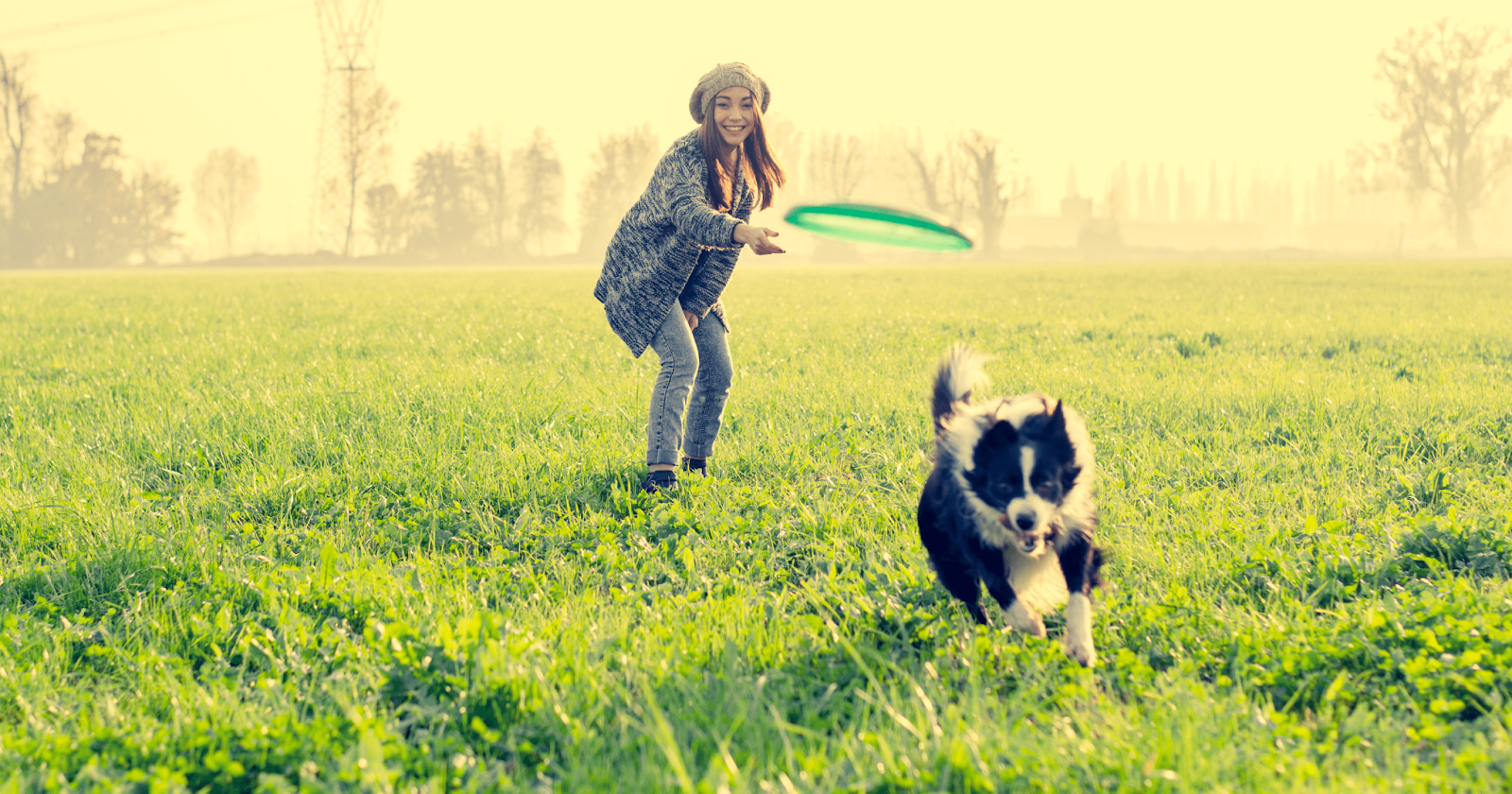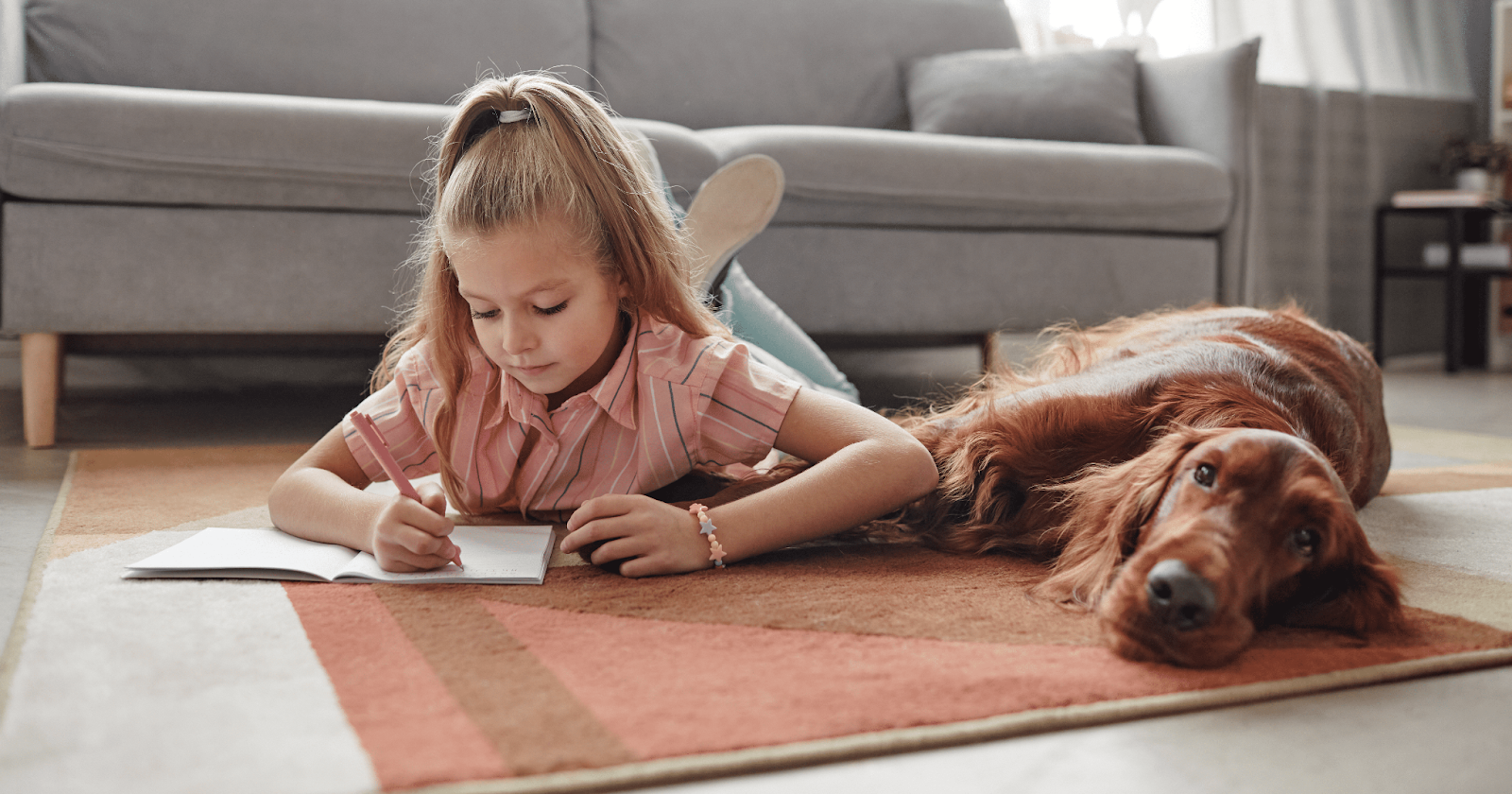Caring for a dog can enrich a human’s life in so many ways – they are our companions and help to reduce loneliness, they encourage us to go outside for walks and exercise, and they help reduce stress, anxiety and depression. But dogs are emotional animals too, and just as we need to consider our mental health, the same applies to our dogs.
Yet while we humans can always tell someone how we feel, dogs cannot. So we have to learn to spot signs that our dog is finding something challenging! Although some signs are more obvious, like changes in behaviour patterns, being more lethargic or being restless, we may miss some of the more subtle indications that something’s amiss, such as:
- Blinking or turning their head away
- Crouching with their tail between their legs
- Licking their lips or yawning excessively
- Panting – as well as panting when they are hot, dogs can also pant more if they are stressed
- Shaking, trembling or salivating
- Moving away or hiding, when they are normally more sociable

If you notice significant changes in your dog’s behaviour, speak to your vet as there may be some underlying medical issues that you are not aware of. It’s important that you don’t ignore any changes as these could escalate into something more serious.
10 Ways to Keep Your Dog Mentally Healthy!
It’s our responsibility to make sure that our dog’s mental, emotional and physical needs are met:
1. Detecting a dog’s health issues early can help you manage them better and lead to a faster recovery – so ensure your pooch has at least an annual health check with your vet.
2. Daily exercise helps your dog’s mental and physical health, so a good exercise regime is important. Remember that different breeds of dogs need different amounts of exercise. For example, a Shih Tzu might need only 30 minutes of exercise each day, whereas a Border Collie will take you for a daily 2-hour walk quite happily!
3. When out walking, play games with your dog. As well as ball and frisbee games where they play fetch, why not try playing hide and seek in the woods? Don’t forget to reward them every time they find you!
4. Create a scent trail for your dog. Dogs just love following a scent, so why not turn it into a game that will help them use those super-senses to their full potential. Sniffing is your dog's way of making sense of the world around them; it provides lots of mental stimulation, keeping their brain and body healthy.
5. Consider doing some training while out walking. This can include obedience training, recall or even learning to socialize with other dogs that are sharing your walk.

6. Boredom can lead to stress-related misbehaviour, so plan different activities to keep your dog mentally stimulated if you need to leave them home alone while you are at work.
7. Consider what might be overwhelming for your dog and avoid situations that will be stressful. They might not like house visitors, so make sure they have a safe space they can retreat to; if they are nervous around traffic, make sure you walk them away from roads and traffic noise.
8. Dogs like routine, so take them to places you know they enjoy, but it’s also good to try somewhere new every now and again – there are bound to be lots of new smells to investigate! If your normal haunt is a park or field, why not try a walk in the woods – but make sure their recall is up to scratch!
9. Change around the home can be unsettling for dogs, so if you are planning a change in routine, prepare them for this well in advance. For example, if you are planning to leave them home alone, make sure you leave them alone for short periods of time and gradually build up to a longer time, but try and keep as much to their routine as possible i.e. meal times, play times, exercise etc.
10. Training with positive reinforcement teaches your dog that making decisions and interacting with you (and the environment) brings good things (which might be treats, but sometimes praise is just enough!). It is also mentally stimulating for them and they will look forward to future games and treats!
A dog that is both physically and mentally relaxed is a happy dog! To give your pooch the support they need to stay calm and relaxed, use an ADAPTIL Calm which releases “appeasing messages” to help dogs feel reassured and relaxed in many challenging situations.
